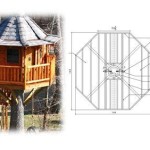Essential Aspects of Big House Plants Low Light
Growing large houseplants in low-light conditions may seem like a daunting task, but with the right plant selection and care, you can create a thriving indoor oasis. Here are the essential aspects to consider for successful low-light, big houseplants:
Plant Selection
The key to thriving low-light houseplants lies in choosing species that naturally adapt to dim environments. Some popular options include:
- Snake plant (Sansevieria trifasciata): Known for its upright sword-like leaves, the snake plant tolerates extreme neglect, including low light.
- ZZ plant (Zamioculcas zamiifolia): Featuring glossy, arrow-shaped foliage, the ZZ plant can survive extended periods of drought and low light.
- Peace lily (Spathiphyllum wallisii): This elegant plant produces white, trumpet-shaped flowers and enjoys bright, indirect light or low-light conditions.
- Cast iron plant (Aspidistra elatior): As its name suggests, the cast iron plant is incredibly durable and can withstand low light, making it ideal for dimly lit corners.
- Prayer plant (Maranta leuconeura): Prayer plants are known for their variegated foliage that folds up at night, giving them the appearance of praying hands. They prefer bright, indirect light but can tolerate lower light levels.
Light Positioning
Even though low-light plants are tolerant of dimness, proper placement is crucial for their growth. Try to position your plants:
- Near windows that receive indirect or filtered light, such as north-facing windows.
- In rooms with large windows that provide ample natural light, even if it's spread out over a wider area.
- Under artificial grow lights designed to supplement natural light and extend plant growth.
Watering Schedule
Low-light plants generally require less water than their higher-light counterparts. Overwatering can be detrimental, so allow the soil to dry out slightly before watering again. As a rule of thumb, check the top inch or two of soil before watering. If it's dry to the touch, it's time to water.
Leaf Care
Dust can accumulate on leaves, blocking light penetration and affecting photosynthesis. Regularly wipe down leaves with a damp cloth to remove dust and ensure optimal light absorption.
Fertilizing
During the growing season (spring and summer), fertilize low-light plants sparingly with a balanced liquid fertilizer. Over-fertilizing can burn roots, so follow the instructions on the product label.
Repotting
As your low-light houseplants grow, they may need to be repotted to provide more space for their root systems. Choose a pot that is slightly larger than the current one and use a well-draining potting mix. Avoid over-potting, as this can lead to waterlogging.
By following these essential aspects, you can successfully grow big house plants in low light, adding a touch of greenery and vitality to your dim corners and dimly lit rooms.

Best 30 Low Light Indoor Plants For Home Or Office

6 Indoor Trees That Thrive In Low Light Won T

6 Indoor Trees That Thrive In Low Light Won T

29 Best Low Light Indoor Plants 2024 That Don T Need

Low Light Indoor Plants Patch

31 Best Low Light Indoor Plants And How To Care For Them Architectural Digest

The 12 Best Low Light Houseplants For Darker Homes And Offices Sunset

6 Indoor Trees That Thrive In Low Light Won T

27 Easy Low Light Indoor Plants That Don T Need Much Sun

14 Large Indoor Plants For Low Light








